
The 452nd Air Mobility Wing is an Air Reserve Component of the United States Air Force. It is assigned to the Fourth Air Force, Air Force Reserve Command, stationed at March Air Reserve Base, California. If mobilized, the Wing is gained by the Air Mobility Command.

The 434th Air Refueling Wing is an Air Reserve Component of the United States Air Force. It is assigned to the Fourth Air Force, Air Force Reserve Command, stationed at Grissom Air Reserve Base, Indiana. The 434th Air Refueling Wing principal mission is air refueling. If mobilized, the Wing is gained by the Air Mobility Command. In July 1949, Continental Air Command (ConAC) reopened Atterbury Air Force Base, Indiana, a World War II field, as a training base for reserve flying units and activated the 434th Troop Carrier Wing there the wing initially flew the Douglas C-47 Skytrain, but soon converted to Curtiss C-46 Commandos, and is now operating the Boeing KC-135 Stratotanker.
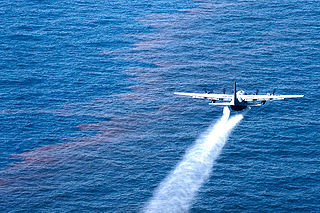
The 757th Airlift Squadron is an Air Force reserve unit, part of the 910th Airlift Wing stationed at Youngstown Air Reserve Station (YARS), Ohio. It flies C-130H Hercules aircraft on airlift and aerial spray missions.

The 459th Air Refueling Wing is a wing of the Air Force Reserve Command of the United States Air Force. It is assigned to the Fourth Air Force and stationed at Joint Base Andrews, Maryland. If mobilized, the wing would be gained by the Air Mobility Command. The wing flies and maintains Boeing KC-135 Stratotankers, providing air refueling.
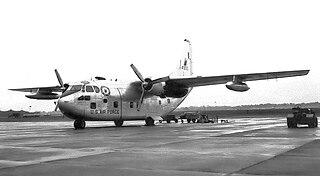
The 309th Maintenance Wing is an inactive wing of the United States Air Force last based at Hill Air Force Base, Utah. On July 12, 2012 it was inactivated and its function became part of the Ogden Air Logistics Complex.

The 728th Airlift Squadron is a United States Air Force Reserve squadron, assigned to the 446th Operations Group, stationed at McChord Field, Joint Base Lewis-McChord, Washington. It is an associate unit of the active duty 8th Airlift Squadron of the 62d Airlift Wing.
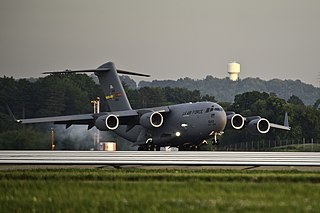
The 729th Airlift Squadron is a United States Air Force Reserve squadron, assigned to the 452d Operations Group, stationed at March Air Reserve Base, California. It operates Boeing C-17 Globemaster III aircraft providing global airlift any time, any place.

The 730th Air Mobility Training Squadron is an Air Force reserve unit stationed at Altus Air Force Base, Oklahoma, where it trains airmen on Boeing C-17 Globemaster III, Boeing KC-135 Stratotanker and Boeing KC-46 Pegasus aircraft systems. It is assigned to the 507th Operations Group at Tinker Air Force Base, Oklahoma, but performs its training mission under the direction of the 97th Air Mobility Wing of Air Education and Training Command.

The 758th Airlift Squadron is part of the 911th Airlift Wing at Pittsburgh International Airport, Pennsylvania. It operates the Boeing C-17 Globemaster III aircraft, providing global strategic airlift.

The 77th Air Refueling Squadron is a United States Air Force Reserve squadron, assigned to the 916th Operations Group, stationed at Seymour Johnson Air Force Base, North Carolina.

The 336th Air Refueling Squadron is a United States Air Force Reserve squadron, assigned to the 452d Operations Group, stationed at March Joint Air Reserve Base, California. The squadron shares its aircraft and facility with the 912th Air Refueling Squadron, a USAF Associate Unit assigned to the 92d Air Refueling Wing.
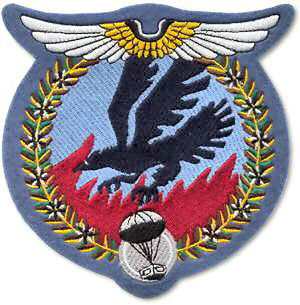
The 67th Troop Carrier Squadron is an inactive United States Air Force unit. It was last assigned to the 433d Troop Carrier Group, based at Rhein-Main Air Base, West Germany. It was inactivated on July 14, 1952.

The 302d Operations Group is the operational flying component of the 302d Airlift Wing of the United States Air Force Reserve. It is stationed at Peterson Air Force Base, Colorado.
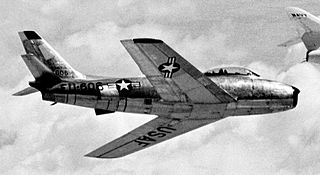
The 813th Fighter-Bomber Squadron is an inactive United States Air Force unit. Its last assignment was with 482d Fighter-Bomber Group at Dobbins Air Force Base, Georgia.

The 738th Expeditionary Airlift Squadron is a provisional United States Air Force unit. It is assigned to Air Combat Command (ACC) to activate or inactivate as needed. It operates Lockheed C-130 Hercules aircraft in theater airlift missions as part of the Global War on Terrorism. Its current status and duty location is undetermined.

The 459th Operations Group is a reserve component of the United States Air Force. It is assigned to the 459th Air Refueling Wing, Fourth Air Force of Air Force Reserve Command, at Joint Base Andrews, Maryland. If mobilized, the Wing is gained by Air Mobility Command.
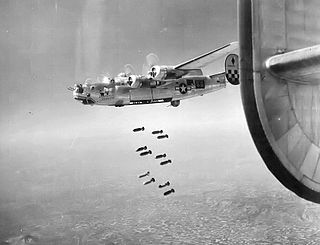
The 759th Bombardment Squadron is an inactive United States Air Force unit. The squadron was organized in July 1943 as a Consolidated B-24 Liberator unit. After training in the United States, it moved to Italy, where it engaged in the strategic bombing campaign against the Axis, earning a Distinguished Unit Citation for an attack on an aircraft factory in Austria. it was inactivated after returning to the United States.

The 704th Fighter Squadron is an inactive United States Air Force unit. It was last assigned to the 924th Fighter Group at Bergstrom Air Force Base, Texas, where it was inactivated on 27 September 1996, when Air Force operations at Bergstrom ended.

The 705th Tactical Airlift Training Squadron is an inactive United States Air Force unit. It was last assigned to the 924th Tactical Airlift Group at Ellington Air Force Base, Texas where it was inactivated on 30 June 1976, when reserve flying operations at Ellington ended.

The 909th Tactical Airlift Group is an inactive United States Air Force Reserve unit. It was last active with the 459th Tactical Airlift Wing at Andrews Air Force Base, Maryland, where it was inactivated on 1 September 1975.





























